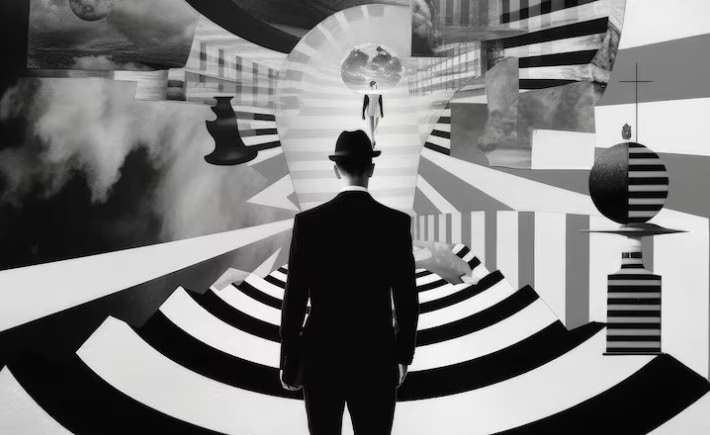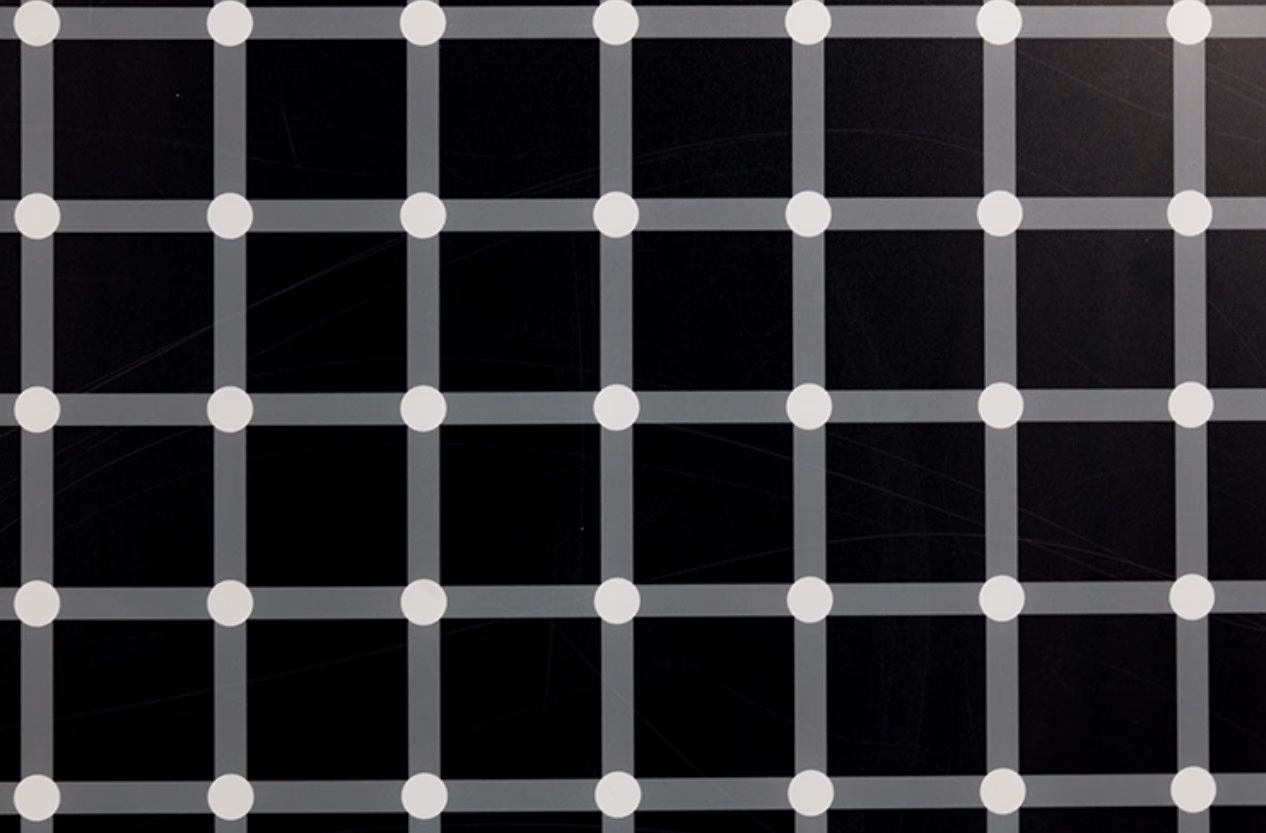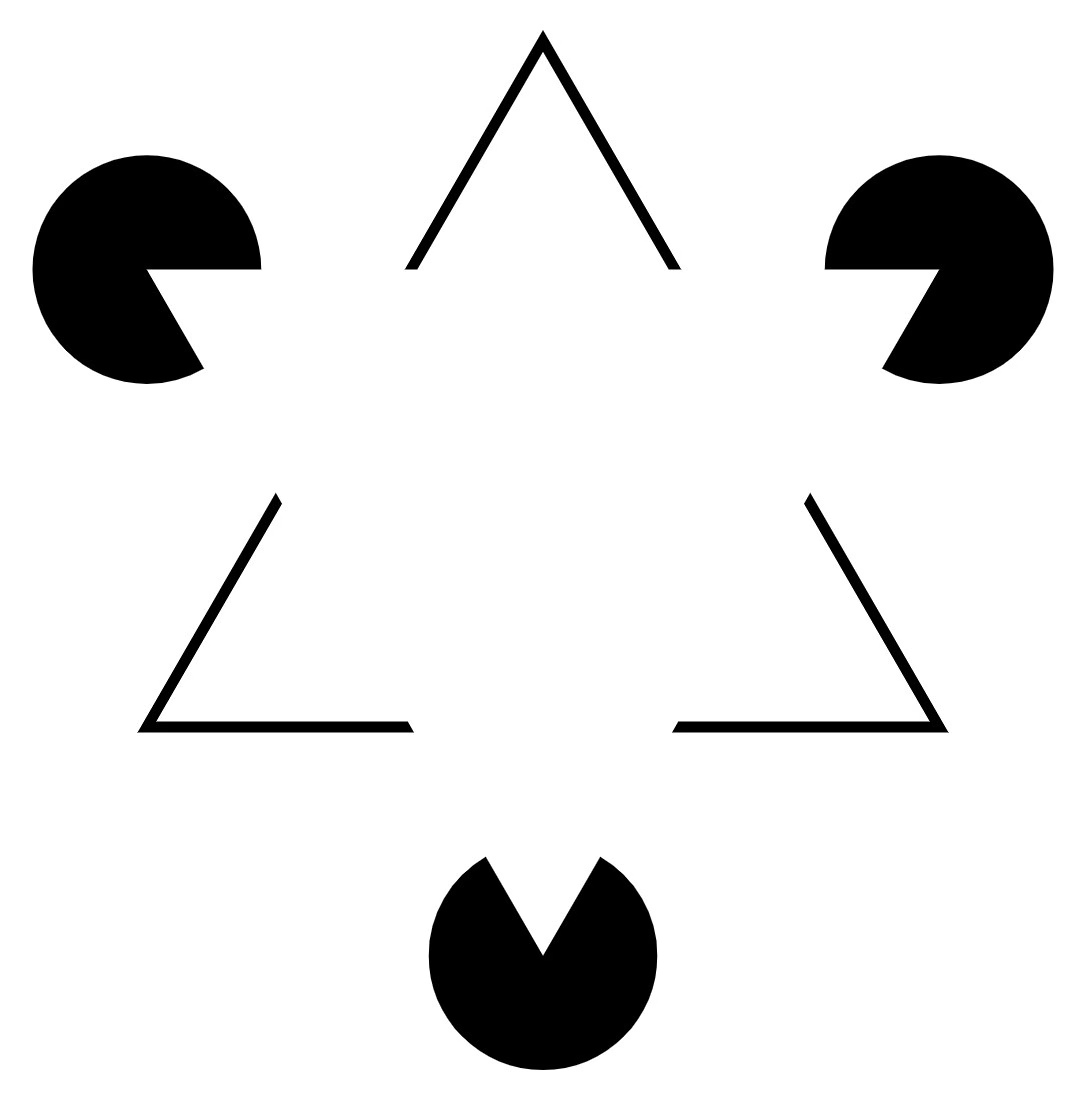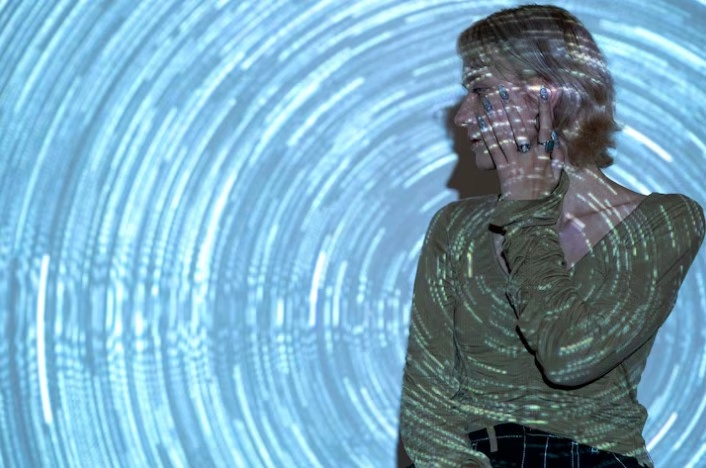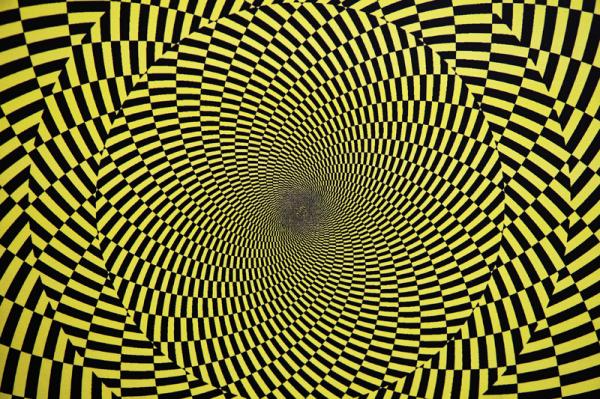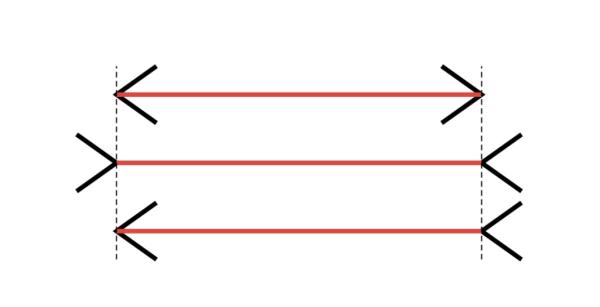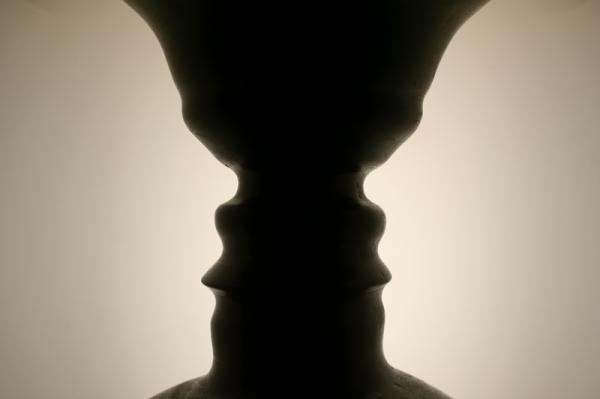Have you ever stared at an image and sworn it was moving, only to realize moments later that it was completely still? Or looked at a drawing that seemed to be two entirely different pictures depending on how you focused your eyes? That unsettling yet fascinating experience is your brain caught in the act of doing what it does best—making sense of incomplete information. And sometimes, in that process, it gets things spectacularly wrong.
Optical illusions aren’t just party tricks or internet curiosities designed to rack up social media shares. They’re windows into one of the most fundamental questions in psychology: how do we actually perceive reality? Every moment of your waking life, your brain constructs what you experience as “the world” from electrical signals sent by your eyes. This construction happens so seamlessly, so automatically, that we rarely question it. We assume our eyes are like cameras, passively recording what’s out there. But that assumption couldn’t be further from the truth.
Your visual system is an interpretation machine, constantly making educated guesses about what it’s seeing based on context, past experience, and built-in assumptions about how the world works. Most of the time, these guesses are accurate enough to navigate reality successfully. You don’t walk into walls. You recognize faces. You catch thrown objects. But optical illusions reveal the moments when this system’s shortcuts and assumptions lead it astray. They show us that perception isn’t passive reception—it’s active construction.
As a psychologist who has spent years studying perception and cognition, I find optical illusions endlessly compelling not because they’re amusing curiosities, but because they’re diagnostic tools. They reveal the hidden mechanisms of perception, the rules your brain follows that you never consciously learned. When we understand why a particular illusion fools us, we gain insight into how vision actually works. We discover that the brain prioritizes speed over perfect accuracy, that it fills in missing information based on probability, that it’s more concerned with useful interpretation than objective truth.
The study of optical illusions sits at the intersection of neuroscience, cognitive psychology, and even philosophy. These deceptive images have helped researchers map the visual pathways in the brain, understand how we perceive depth and motion, and uncover the surprising degree to which our expectations shape what we see. They’ve revealed that different parts of the brain can interpret the same visual information in conflicting ways, leading to those strange moments when an image seems to flip between two different interpretations right before your eyes.
But perhaps most importantly, optical illusions remind us of something profound about the human condition: we don’t have direct access to reality. Everything we experience is mediated by our sensory systems and interpreted by our brains. What you see isn’t what’s actually there—it’s what your brain has decided is most likely there based on the available evidence. Most of the time, that’s good enough. But sometimes, as optical illusions demonstrate, it’s beautifully, bizarrely wrong. Let’s explore this fascinating territory where perception meets deception, where seeing isn’t quite believing, and where getting fooled actually teaches us how we normally get things right.
What Optical Illusions Really Are
Before diving into specific types and examples, we need to establish exactly what we mean by an optical illusion. An optical illusion occurs when there’s a mismatch between the physical reality of a visual stimulus and what we consciously perceive. The key word here is “mismatch.” The image hasn’t changed—your perception of it has diverged from what’s objectively there.
This definition is more precise than it might initially seem. Not every visual experience that surprises us qualifies as an optical illusion. When you see a mirage on a hot road, that’s a physical phenomenon caused by light bending through layers of air at different temperatures. The light itself is actually creating that shimmering effect. Similarly, when you look at a rainbow, you’re seeing genuine optical physics at work—light refracting through water droplets. These are optical phenomena, but not illusions in the strict psychological sense.
True optical illusions happen in your brain, not in the physical world. The visual information entering your eyes is accurate, but somewhere in the processing—either in the retina, the visual cortex, or higher-level interpretive areas—your brain makes an error in interpretation. This error isn’t random; it’s systematic, which is why the same illusion fools virtually everyone who looks at it. Your brain is following rules, and those rules, while generally useful, can be exploited to create perceptual mistakes.
Consider what happens when visual information travels from your eyes to your conscious awareness. Light hits the retina, where photoreceptor cells convert it into neural signals. These signals travel through the optic nerve to the visual cortex at the back of your brain. But that’s just the beginning. The brain then processes this information through dozens of specialized regions, each analyzing different features—edges, colors, motion, faces, and so on. Finally, these separate analyses are somehow integrated into the unified visual experience you have of “seeing” something.
At any point in this complex chain, there’s opportunity for interpretation to diverge from reality. Some illusions exploit how photoreceptors respond to prolonged stimulation. Others take advantage of how the brain interprets depth cues. Still others reveal conflicts between different processing systems that normally work in harmony. What all genuine optical illusions share is that they’re repeatable, predictable, and reveal something about how visual processing actually works.
The Three Major Categories
Psychologists generally classify optical illusions into three main categories, each revealing different aspects of how perception operates. British psychologist Richard Gregory was instrumental in developing this classification system, which has become standard in the field. Understanding these categories helps us appreciate that not all illusions work the same way—they exploit different vulnerabilities in the visual system.
Literal illusions
Literal illusions are perhaps the most straightforward category. These occur when an image is intentionally designed to be interpreted in multiple ways, or when smaller elements combine to create a larger, different image. Think of those pictures where you can see either two faces in profile or a vase, depending on whether you focus on the black or white areas. The famous “My Wife and My Mother-in-Law” drawing fits here too—some people immediately see a young woman looking away, while others see an old woman with a large nose. Both interpretations are valid because the artist deliberately created ambiguity.
These illusions are “literal” because the trick is actually in the image itself, not purely in your brain’s processing. The artist has encoded multiple images into a single drawing by using shared contours and strategic ambiguity. Your brain isn’t malfunctioning—it’s doing exactly what it should by finding a coherent interpretation. The illusion lies in the fact that there are multiple valid interpretations, and your brain can only consciously hold one at a time. With practice, some people can learn to switch between the two interpretations at will, which is a fascinating experience of watching your own perception change while the stimulus remains constant.
Physiological illusions
Physiological illusions occur when your visual system gets overstimulated by particular qualities of an image—brightness, color, movement, or pattern. These illusions happen at a relatively early stage of visual processing, often in the retina itself or the initial stages of cortical processing. A classic example is the afterimage effect: stare at a bright red image for thirty seconds, then look at a white surface, and you’ll see a ghostly green version of the same image. This happens because the red-sensitive cone cells in your retina become temporarily fatigued, and when you look at white light (which contains all colors), the red response is diminished, making the complementary color—green—appear more prominent.
Geometric illusions often fall into this category. The Müller-Lyer illusion shows two lines of identical length, but one appears longer because of arrow-like fins at the ends. Lines with outward-pointing arrows look longer than lines with inward-pointing ones, even when you measure them and confirm they’re the same. Why? The prevailing theory suggests that these configurations trigger depth perception mechanisms. We’re accustomed to seeing corners—inward arrows resemble the corner of a room coming toward us, while outward arrows look like the corner of a building receding away. Our brain automatically applies depth correction, making one line appear farther away and therefore larger.
Cognitive illusions
Cognitive illusions represent the most complex category because they involve high-level processing and interpretation. These illusions reveal how your knowledge, expectations, and assumptions about the world influence what you perceive. Unlike physiological illusions that can be explained by fairly simple mechanisms in the eye or early visual processing, cognitive illusions demonstrate that perception is deeply influenced by top-down processes—your brain using what it knows to interpret ambiguous sensory data.
Cognitive illusions can be further divided into ambiguous illusions, distortion illusions, paradox illusions, and fictional illusions. Each subtype reveals different aspects of how your brain makes assumptions about reality. Ambiguous illusions like Rubin’s vase demonstrate figure-ground relationships—your brain’s need to decide what’s the object and what’s the background. Distortion illusions show how context affects perceived size, length, or curvature. Paradox illusions present impossible objects like the Penrose triangle that seem three-dimensional but couldn’t exist in reality. Fictional illusions involve seeing things that aren’t actually there, like perceiving faces in random patterns—a phenomenon called pareidolia.
How the Brain Constructs Visual Reality
To truly understand optical illusions, you need to grasp something counterintuitive about perception: your brain is not simply receiving images from your eyes. It’s actively constructing a model of the world based on incomplete and ambiguous information. The visual experience you have at any moment is your brain’s best guess about what’s out there, not a direct readout of physical reality.
This might sound abstract, so consider a concrete example. When you look at this text right now, you probably feel like you’re seeing all the words clearly and simultaneously. But that’s an illusion in itself. Your eyes have a small region of high-resolution vision called the fovea, which only covers about two degrees of your visual field—roughly the size of your thumbnail at arm’s length. Everything outside that tiny region is actually quite blurry. You don’t notice this because your eyes constantly move in rapid jumps called saccades, and your brain seamlessly stitches together these snapshots into the feeling of continuous, clear vision across your entire visual field.
Your brain also fills in information that isn’t actually there. You have a blind spot in each eye where the optic nerve exits the retina, meaning there are no photoreceptors in that region. Yet you never see a black hole in your vision because your brain fills it in with information from the surrounding area, essentially inventing visual information to create a complete picture. This isn’t conscious or voluntary—it happens automatically, below your awareness.
These facts about vision illuminate why optical illusions work. Your brain is constantly making assumptions, taking shortcuts, and filling in gaps. It prioritizes speed and usefulness over perfect accuracy because in evolutionary terms, a fast, mostly accurate perception system that occasionally makes mistakes is better than a slow, perfectly accurate one. An ancestor who saw a curved stick and thought “snake!” survived longer than one who carefully analyzed whether it was actually a snake before reacting, even if the first one was wrong more often.
Optical illusions exploit these assumptions and shortcuts. When you see an impossible object like an endless staircase, your brain is applying rules about how three-dimensional objects should look in two-dimensional drawings. These rules work perfectly well for real objects but can be manipulated by clever artists to create contradictory information. Your brain tries to reconcile the contradiction and fails, creating that characteristic feeling of perceptual confusion that makes optical illusions so compelling.
Context plays an enormous role in perception, which is why so many illusions involve surrounding elements that influence how you see a central feature. The same gray square looks darker against a light background and lighter against a dark background. The same line looks curved when surrounded by concentric circles. Your brain doesn’t evaluate features in isolation—it always considers context, and illusions exploit this by providing misleading contextual information.
Famous Examples and What They Reveal
Let’s examine some specific optical illusions and what they teach us about perception. Each famous illusion has survived because it reliably demonstrates something important about how vision works.
The Müller-Lyer illusion, mentioned earlier, is one of the most studied in all of psychology. Two horizontal lines of identical length appear different because of the arrow-like fins at their ends. This simple illusion has generated decades of research because it reveals how depth perception influences even basic judgments of length. Interestingly, the illusion is stronger in people from Western cultures who live in “carpentered environments” with lots of right angles and rectangular rooms. People from cultures with more circular architecture show less susceptibility to this illusion, suggesting that our visual system learns from environmental regularities.
The Hermann grid illusion presents a white grid on a black background. At the intersections of the white lines, gray blobs appear in your peripheral vision, but they disappear when you look directly at them. This illusion reveals how lateral inhibition works in the retina. Cells that detect light inhibit their neighbors, creating enhanced contrast at edges. At the intersections, this inhibition pattern creates the perception of darkness that isn’t actually there. It’s a beautiful demonstration of how perception is actively constructed at the earliest stages of visual processing.
Rubin’s vase, which can be seen as either a vase or two faces in profile, demonstrates the brain’s need to parse visual scenes into figure and ground. You can’t see both interpretations simultaneously—your brain has to commit to one organization of the visual elements at a time. This reveals that perception isn’t just about registering what’s there; it’s about organizing sensory data into meaningful categories. The same pattern of light and dark can be organized in multiple ways, and your conscious experience changes dramatically depending on which organization your brain selects.
Motion illusions like the rotating snakes illusion show static images that appear to move. These work by exploiting how your brain processes motion signals. When your eyes make small movements (which they do constantly, even when you think you’re holding them still), certain patterns of contrast and color trigger motion detectors in your visual cortex even though nothing is actually moving. This reveals that motion perception doesn’t require actual motion—it only requires the right pattern of stimulation of motion-sensitive neurons.
The Ames room creates a powerful illusion of size. It’s a distorted room where the far-left corner is actually much farther from the viewer than the far-right corner, but perspective cues are manipulated to make it look like a normal rectangular room. When people stand in the two far corners, one appears gigantic and the other tiny because your brain assumes the room is rectangular and adjusts your perception of the people’s sizes accordingly. This demonstrates that depth perception relies on assumptions about the environment that can be violated by carefully constructed scenes.
Why We Fall for the Same Illusions Repeatedly
Here’s something fascinating about optical illusions: even when you know how they work, they still fool you. You can measure the lines in the Müller-Lyer illusion with a ruler, confirm they’re identical, and yet they still look different lengths. You can switch back and forth between seeing the vase and the faces in Rubin’s illusion, fully aware that it’s just one ambiguous image, and yet each interpretation feels real and distinct when you’re experiencing it.
This persistence of illusions even after you understand them reveals something profound about perception. The processes that create visual experience are largely automatic and unconscious, running independently of your conscious knowledge and beliefs. Your higher-level cognitive systems can know something intellectually—”Those lines are the same length”—while your perceptual systems continue to produce the illusory experience—”That line looks longer.” These systems operate in parallel, not always influencing each other.
This separation between perception and cognition is actually adaptive. You don’t want your visual system constantly checking with your conscious reasoning before delivering perceptual information. That would be far too slow. Vision needs to be fast, and fast systems rely on hardwired shortcuts and assumptions. The cost of speed is occasionally getting fooled by artificial stimuli specifically designed to exploit those shortcuts.
Some researchers have found that people’s susceptibility to certain illusions decreases slightly with repeated exposure, suggesting some limited learning can occur. But the basic illusion persists. This tells us that while some aspects of perception are malleable and influenced by experience, the fundamental mechanisms are fairly rigid. Evolution has shaped these mechanisms over millions of years, and a few minutes of learning that an image is an illusion can’t override that deep programming.
There’s also evidence that different people may experience some illusions differently based on factors like age, cultural background, and even personality traits. The Müller-Lyer illusion shows cultural variation. Some bistable images like the spinning dancer can preferentially flip in one direction for some people. These individual differences remind us that while perception follows general principles, it’s also shaped by personal experience and neural variation.
Illusions in the Digital Age
The internet has created an explosion of interest in optical illusions, with viral images regularly circulating that seemingly divide people into different camps. Remember the dress that appeared white and gold to some people and blue and black to others? Or the audio clip that sounded like “Yanny” to some and “Laurel” to others? These modern illusions reveal something important about individual differences in perception.
The dress illusion was particularly fascinating because it divided people so sharply and generated genuine disagreement. Research revealed that the illusion depended on assumptions people made about the lighting conditions under which the dress was photographed. If your brain assumed the dress was in shadow, it compensated by seeing it as white and gold. If your brain assumed it was in bright light, it compensated differently and you saw blue and black. The actual dress was blue and black, but the photograph was genuinely ambiguous about lighting.
This illusion taught us that people unconsciously make different assumptions about basic visual properties like lighting, and these assumptions profoundly shape what they see. It’s likely that these assumptions are shaped by personal visual experience—what kinds of lighting you’re typically exposed to, how your visual system has learned to interpret ambiguous cues. The fact that people saw such different things while looking at the identical image is a powerful reminder that perception is constructed, not received.
Social media has also popularized “hidden object” illusions where something is camouflaged in a busy scene and becomes obvious once pointed out. These illusions demonstrate how attention shapes perception. The object was there all along, its image was registered by your retina, but without attention directed to it, it never reached consciousness. Once you find it, you can’t unsee it—your brain has now organized that part of the scene in a new way that makes the object pop out.
Digital manipulation has also created new forms of illusions. Animated gifs can create continuous motion illusions where balls seem to roll uphill or stairs lead endlessly upward. Video technology allows for illusions that couldn’t exist in static images. Virtual reality presents new possibilities for perceptual manipulation, creating entire environments where normal rules can be violated. As technology advances, our ability to create increasingly sophisticated illusions will only grow.
What Illusions Teach About Mental Processing
Beyond their entertainment value, optical illusions serve as valuable research tools in psychology and neuroscience. They provide a window into mental processes that normally operate invisibly, revealing the mechanisms of perception by showing where they break down. Scientists can use illusions to map brain regions involved in specific aspects of vision, understand the timing of different processing stages, and test theories about how perception works.
For example, brain imaging studies have shown that different illusions activate different brain regions. Illusions involving motion activate motion-processing areas like V5, while illusions involving faces activate the fusiform face area. This regional specificity supports the idea that visual processing is highly modular, with specialized regions handling specific types of information.
Illusions also help researchers understand visual development. Infants and young children show different patterns of susceptibility to various illusions compared to adults, suggesting that some perceptual mechanisms develop with experience. The Müller-Lyer illusion, for instance, has a reduced effect in young children, supporting the theory that it depends on learned associations between angular patterns and depth.
Clinical populations provide additional insights. People with certain types of brain damage may be immune to specific illusions, revealing which brain areas are necessary for those illusions to occur. Individuals with schizophrenia show altered patterns of susceptibility to certain illusions, which has helped researchers understand how that condition affects perception. People on the autism spectrum sometimes show reduced susceptibility to context-dependent illusions, which relates to theories about differences in their perceptual processing.
The study of illusions has also influenced artificial intelligence and computer vision. When engineers try to create systems that can interpret visual scenes, they encounter many of the same challenges the human brain faces. Understanding how and why optical illusions fool humans helps engineers design better computer vision systems and reveals just how sophisticated human perception actually is.
FAQs About Optical Illusions in Psychology
Why do optical illusions work on everyone?
Optical illusions work on virtually everyone because they exploit universal features of the human visual system that are present in all normally functioning brains. These perceptual mechanisms evolved over millions of years and are built into the structure and function of our eyes and brains, not learned individually. When an illusion takes advantage of how lateral inhibition works in the retina, or how the brain interprets depth cues, or how motion detectors respond to specific patterns, these mechanisms operate the same way in everyone. While there can be minor individual differences in the strength of an illusion based on factors like age, culture, or personal experience, the basic effect occurs across humanity because we all share the same fundamental visual architecture. This universality is actually what makes illusions so valuable for research—they reveal general principles of perception rather than idiosyncratic individual responses. The fact that the same carefully designed image can reliably fool billions of people tells us that perception follows predictable rules that can be systematically studied.
Can animals see optical illusions like humans do?
Yes, many animals experience optical illusions similar to those that fool humans, which provides fascinating insights into the evolution of visual perception. Researchers have demonstrated that primates, birds, fish, and even insects can be fooled by certain illusions, suggesting that the perceptual mechanisms underlying these illusions are ancient and evolutionarily conserved. For example, studies have shown that monkeys are susceptible to the Müller-Lyer illusion and pigeons can be fooled by motion illusions. Even fruit flies show sensitivity to motion illusions similar to those experienced by humans. However, not all illusions work across species—some that depend on highly specific aspects of human vision or cognition may not fool animals with different visual systems. The pattern of which illusions work across species reveals which aspects of visual processing are universal among animals with similar ecological needs (like detecting edges and motion) versus which are specific to particular species. This comparative approach helps researchers understand how perception evolved and why certain visual processing strategies emerged. The fact that a small insect and a human can be fooled by the same moving pattern tells us something profound about the fundamental constraints of visual processing that apply across vastly different nervous systems.
Are some people immune to optical illusions?
While no one is completely immune to all optical illusions, people do show varying degrees of susceptibility to different illusions, and some neurological conditions can reduce or eliminate specific illusory effects. Research indicates that individuals on the autism spectrum sometimes show reduced susceptibility to certain context-dependent illusions, possibly due to differences in how their brains integrate local versus global visual information. People with damage to specific brain regions may lose the ability to experience particular illusions that depend on those areas. For example, someone with damage to motion-processing areas might not experience motion illusions. Age is another factor—young children often show reduced susceptibility to some illusions because their visual systems are still developing and haven’t yet fully acquired certain perceptual assumptions. Cultural background also plays a role in some illusions; people from non-Western cultures with less exposure to rectangular architecture show reduced Müller-Lyer effects. However, it’s important to note that being less susceptible to an illusion doesn’t mean someone has “better” perception—these perceptual mechanisms exist because they’re usually beneficial for interpreting the real world. The person who doesn’t fall for an illusion may simply be processing visual information differently, which could have both advantages and disadvantages in other contexts.
What is the difference between optical illusions and hallucinations?
Optical illusions and hallucinations are fundamentally different phenomena, though both involve perceiving something that doesn’t match objective reality. Optical illusions are perceptual misinterpretations of real external stimuli that occur in normally functioning brains when specific visual patterns exploit the rules of perceptual processing. Everyone looking at the same illusory image sees the illusion because the stimulus is actually there and contains genuinely ambiguous or misleading information. In contrast, hallucinations involve perceiving something when there is no external stimulus at all—seeing, hearing, or feeling things that aren’t there in any form. Hallucinations result from abnormal brain activity, whether due to mental illness like schizophrenia, neurological conditions, sleep states, sensory deprivation, or drug effects. They’re subjective experiences not shared by others looking at the same scene. While illusions reveal normal perceptual mechanisms being tricked, hallucinations reveal abnormal perceptual mechanisms generating experiences without appropriate input. However, studying illusions can actually help us understand hallucinations by showing how perception is always constructive rather than purely receptive—once we understand that the brain constantly interprets and fills in information even during normal perception, it becomes easier to understand how that system might generate percepts without external input when functioning abnormally.
Why do optical illusions still work even after you know about them?
Optical illusions persist even after you understand them because the perceptual processes that create the illusion operate automatically and unconsciously, largely independent of your conscious knowledge and beliefs. The visual system processes information rapidly using hardwired mechanisms that evolved long before human reasoning abilities developed, and these systems don’t consult your conscious understanding before producing perceptual experiences. When you look at the Müller-Lyer illusion and one line looks longer despite your knowledge that they’re equal, you’re experiencing the separation between cognitive knowledge and perceptual processing. Your higher-level thought processes can understand intellectually that you’re being tricked, but your visual cortex continues to apply depth compensation mechanisms automatically, generating the illusion regardless. This architecture is actually adaptive—you need vision to be fast and automatic, not constantly waiting for conscious deliberation before showing you the world. If every visual perception required conscious approval, you’d be far too slow to catch a ball or avoid a hazard. The cost of having fast, automatic perception is that these systems sometimes get fooled, and conscious knowledge can’t easily override the automatic processes. Some research suggests that extensive exposure to illusions can slightly reduce their strength, but the fundamental effect persists because you can’t voluntarily turn off your basic perceptual mechanisms.
What is the most powerful or effective optical illusion?
Determining the “most powerful” optical illusion is subjective and depends on how you define power, but several candidates stand out for their dramatic effects and what they reveal. The Ames room illusion creates one of the most striking distortions, making people appear to be drastically different sizes—sometimes making someone look like a giant or a miniature person—purely through manipulated perspective. The rubber hand illusion is particularly powerful because it can make people feel ownership over a fake rubber hand through synchronized touch, demonstrating how malleable our sense of body ownership is. The hollow face illusion is remarkably difficult to overcome—even when you know a face mask is concave (hollow), it appears to be a normal convex face bulging outward, showing how strongly our brains are biased toward seeing faces as three-dimensional objects. The checker shadow illusion is powerful because the perceptual difference seems so dramatic—two squares that are identical shades of gray appear vastly different in brightness due to context and shadow. Many experts consider the phi phenomenon particularly important—the illusion of motion created by rapidly showing static images in sequence, which is the basis for all animation and film. Its “power” lies in creating an entirely new experience (seeing motion) from stimuli that contain no motion whatsoever. Ultimately, the most powerful illusions are those that reveal fundamental aspects of perception while creating dramatically different experiences from identical or similar stimuli.
Can optical illusions be used therapeutically or in treatment?
Yes, optical illusions and related perceptual phenomena have found several therapeutic and clinical applications in recent years. The most notable example is mirror therapy, which uses visual illusions to treat phantom limb pain in amputees and to aid recovery after stroke. By positioning a mirror so that the reflection of a person’s intact limb appears where their missing or paralyzed limb should be, the brain receives visual feedback that conflicts with other sensory input, which can reduce pain and improve motor recovery. Virtual reality treatments use similar principles, creating illusory visual feedback to help with pain management, phobia treatment, and rehabilitation. Some researchers are exploring how visual illusions can be used to treat conditions like amblyopia (lazy eye) by training the visual system through carefully designed perceptual tasks. The body transfer illusion, where people can be made to feel like a virtual body is their own, is being investigated for treating body image disorders and eating disorders. Understanding how easily perception can be manipulated through illusions has also informed mindfulness-based therapies, which teach people that their perceptions and thoughts are constructions rather than objective reality—a similar insight to what illusions demonstrate visually. While these applications are still being researched and refined, they demonstrate that understanding perceptual illusions isn’t just academic—it can lead to practical interventions for various clinical conditions.
How do optical illusions relate to magic tricks and deception?
Optical illusions and magic tricks are closely related, as both exploit limitations and biases in human perception and attention to create experiences that seem impossible or contradictory to physical reality. Magicians have been practical psychologists for centuries, empirically discovering principles of perception and cognition that researchers later studied scientifically. Many magic techniques rely on perceptual principles similar to those in optical illusions: misdirection exploits how attention determines what reaches consciousness (similar to change blindness), palming relies on assumptions about hand positions and shadows, and forced perspective uses depth cues deceptively. Some magic effects create literal optical illusions through mirrors, lighting, and careful staging. In recent years, psychologists and neuroscientists have increasingly collaborated with magicians to understand the perceptual and cognitive mechanisms that make tricks work. This partnership has been mutually beneficial—scientists gain insights into attention, perception, and expectation from studying magic, while magicians gain a deeper understanding of why their techniques work and how to improve them. The connection extends beyond entertainment; understanding how magicians deceive perception has applications in understanding eyewitness testimony reliability, designing better security systems, and even understanding how con artists manipulate victims. Both optical illusions and magic demonstrate that our perceptual systems, while generally reliable, can be systematically fooled by anyone who understands their operating principles.
Optical illusions are far more than visual curiosities or internet entertainment. They’re revealing windows into how your brain constructs the experience you call reality. Every illusion that successfully fools you is teaching you something about perception—about how your visual system takes shortcuts, makes assumptions, and prioritizes speed over perfect accuracy. These aren’t flaws in your perception; they’re trade-offs that make fast, useful vision possible.
Understanding optical illusions means understanding that you never have direct access to reality itself. What you experience as seeing is actually your brain’s best interpretation of ambiguous sensory data, informed by evolution, learning, and context. Most of the time, this interpretation is accurate enough for you to navigate the world successfully. But illusions reveal the seams in this process, the moments where the interpretation diverges from reality in predictable and systematic ways.
The persistence of these illusions across time and culture tells us something profound about human nature. We all share the same basic perceptual architecture, the same visual shortcuts, the same unconscious assumptions about how the world works. When a carefully designed image fools billions of people in the same way, it’s demonstrating universal principles of perception that transcend individual experience. This universality makes illusions valuable research tools, revealing not just individual quirks but fundamental truths about how human vision operates.
As technology advances, our ability to create and study illusions will only grow. Virtual reality opens new possibilities for perceptual manipulation. Neuroscience provides increasingly detailed understanding of which brain regions create which aspects of illusions. Psychology continues refining theories about the mechanisms underlying different illusory effects. Each new discovery not only tells us more about illusions themselves but illuminates the broader question of how we perceive anything at all.
So the next time you encounter an optical illusion that makes you question what you’re seeing, don’t just enjoy the momentary confusion. Recognize it as your brain revealing its hidden operating principles. Every illusion is a small lesson in neuroscience, a glimpse behind the curtain of consciousness, and a reminder that perception is far stranger and more active than the passive reception of reality we typically imagine it to be. Your eyes and brain are working together right now to construct the experience you’re having, and sometimes—just sometimes—they let you catch them in the act.


